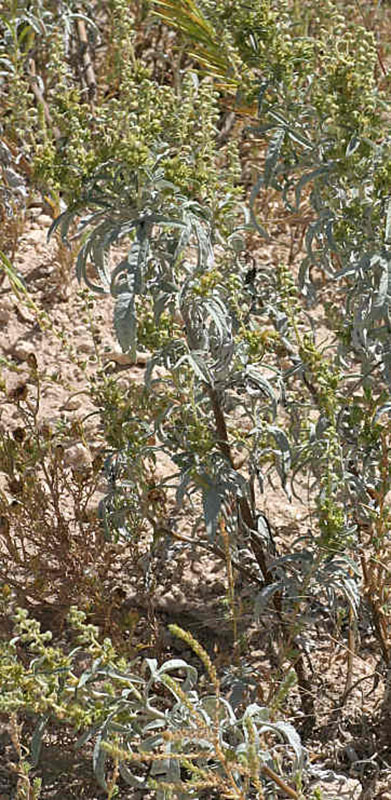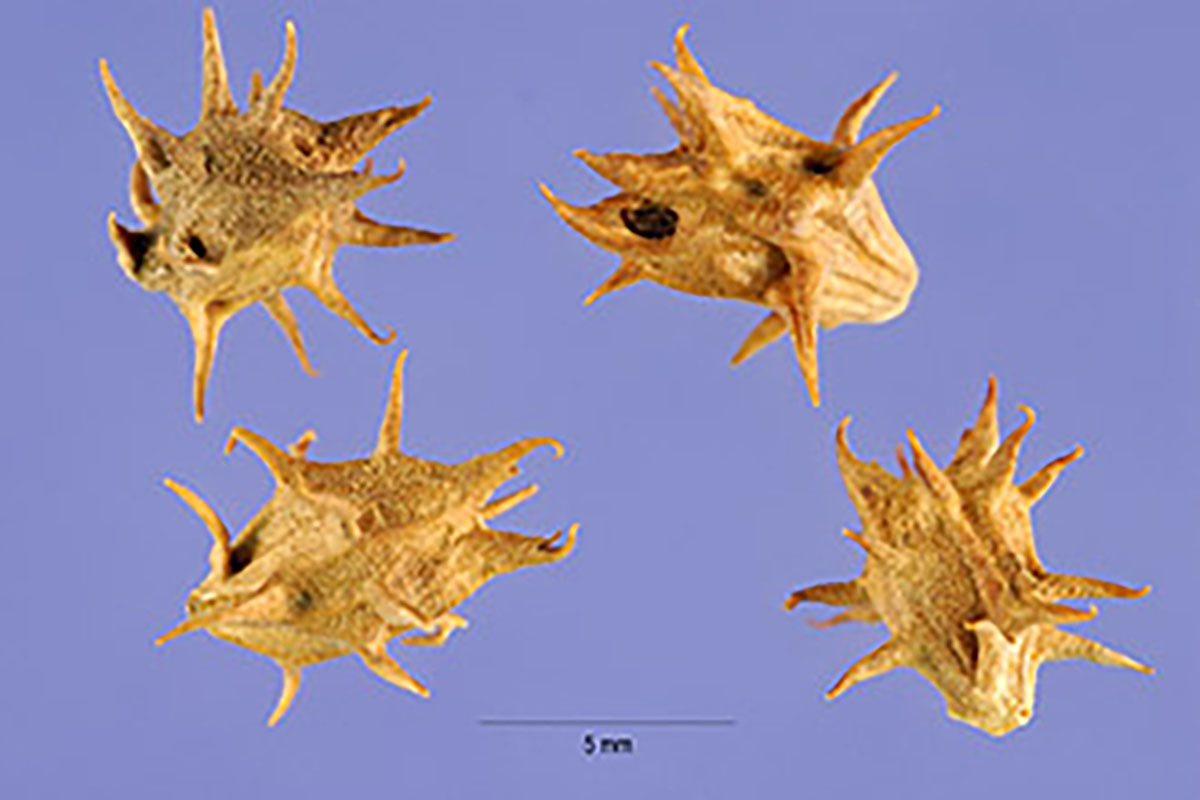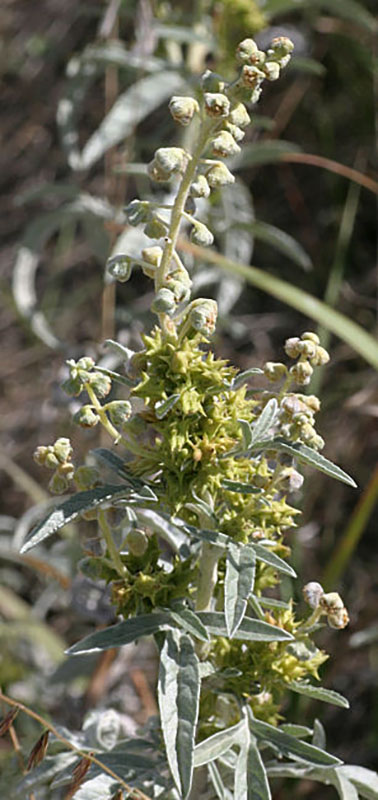Woolyleaf Bursage
Ambrosia grayi
Description
Woollyleaf Bursage (Ambrosia grayi) is a perennial that can grow up to 3.9-11.8 in. (10-30 cm) tall. It has many different common names: Bur Ragweed, and Lagoonweed. The leaves are opposite and have a dusty green color. They can grow up to 0.39-1.8 in. (10-45 mm) in length. The stems are erect. Flowering occurs from August to September. It produces burs that are 0.12-0.2 in. (3-5 mm) round. The fruits are burs that contain the seeds (source).
Habitat
It is adapted to low areas where water runoff collects in cultivated fields or in non-cropland areas. It infests more than 80,000 acres in Kansas, primarily in the western half of the state. The collection of water and the deep perennial root system, which can reach a depth of 15 feet, allow woollyleaf bursage to survive extended periods of drought or harsh weather. Woollyleaf bursage is extremely competitive with crops, and can reduce grain yield by 100 percent in dry years (source).
Location in Nebraska
County listed noxious weed in Banner county in Nebraska.
Pathway of Introduction and Spread
It can be found infesting roadsides, ditches, fields and mid wet areas. This plant can easily transplanted by its burs. The burs can attach themselves to clothes, people and animals. This plant is native to northern Mexico (source).
Impacts
Competes with cultivated crops.
Goodwell and Texhoma, Oklahoma Pasture and Roadside Plants
Steve Hurst. Provided by ARS Systematic Botany and Mycology Laboratory. United States, TX, Amarillo.


